“I am a big believer in tradition,” Disney’s then-CEO Bob Iger told The Hollywood Reporter in 2018. “This just seemed like one of those traditions that if we changed it the empire wasn’t going to crumble.”
As with most of Disney’s most controversial changes, it was a subtly worded post on the Disney Parks Blog that made the announcement: when Star Wars: Galaxy’s Edge opened at Disneyland Park in May 2019, one of its in-universe food and drink stops adding to its “Living Land” status would be Oga’s Cantina – an alien-run watering hole servicing pilots, bounty hunters, smugglers, and galactic travelers with “choices for kids and libations for adults.”
Fans knew exactly what that meant. For the first time in its sixty-year history, alcohol would be available to the public at Disneyland. True to form, that ruffled a few fans’ feathers. Of course, the ban on booze at Disneyland and its “castle park” siblings isn’t quite as cut and “dry” as generalizations would have you believe… And the story of drinking at Disney Parks is far from finished… Let’s dive in…
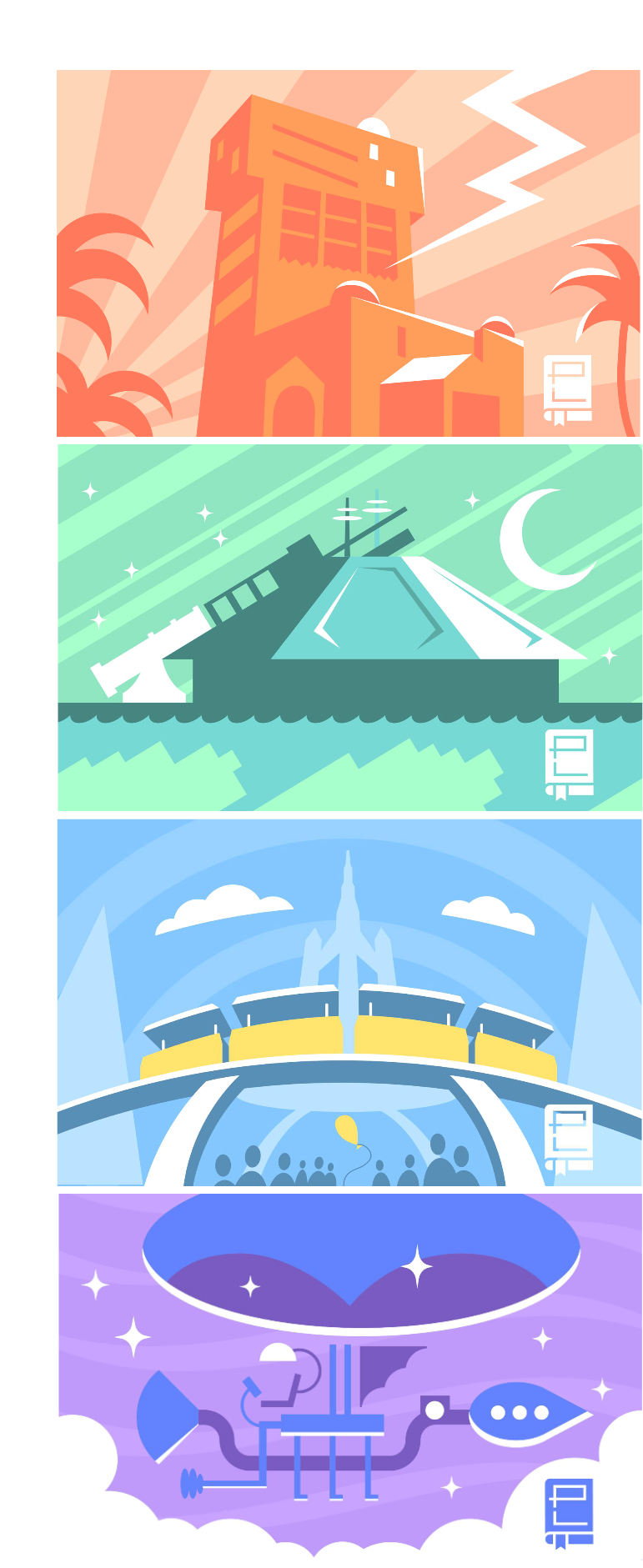
This in-depth article is just one entry in Park Lore’s one-of-a-kind Special Features collection, where we explore the threads that connect between rides, parks, and pop culture! From Imagineering’s secret Society of Explorers and Adventurers, to the history of Chuck E. Cheese; from Disney and Universal’s AVENGERS: “Custody War” to the two-part tale of animation’s rebirth in the generation-defining ’90s Disney Renaissance!
Special Features are typically available exclusively for those who support this evolving theme park history project with a monthly Membership. It’s been unlocked for a limited time, but if you enjoy what you read, consider becoming a Park Lore Member for as little as $2 / month!
Something different (1955)
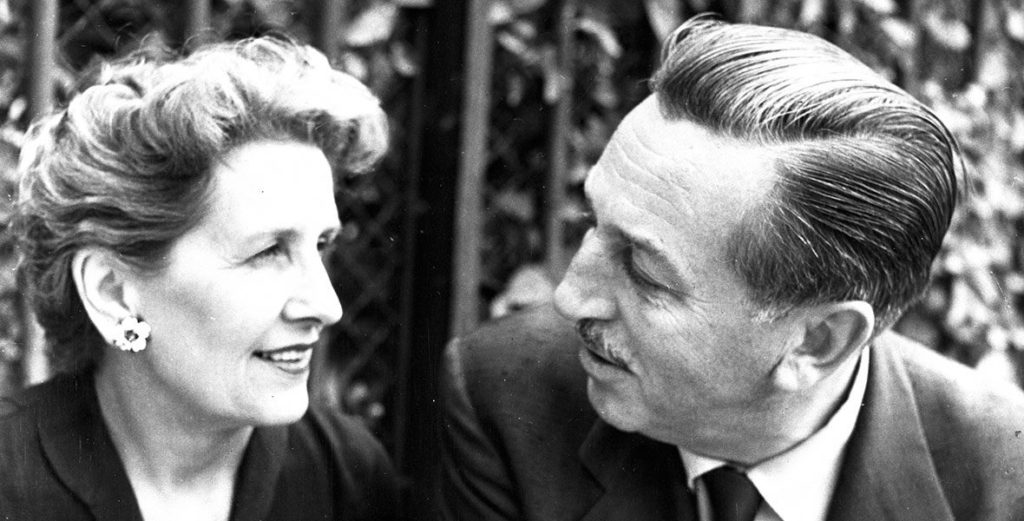
You have to remember at the time of Disneyland’s 1955 opening, Walt had a lot to prove. In that era, there was nothing else quite like Disneyland and very little that was even close. So when Walt spoke of his desires to enter the “amusement park” business, people could only envision the era’s gaudy boardwalks of shouting carnival barkers, rickety thrill rides, and beach-going teens roving around causing trouble.
Even Walt’s own wife Lillian tried to snap her husband out of it, asking, “Why would you want to get involved with an amusement park? They’re so dirty and not fun at all for grownups.”
“Well, that’s exactly my point,” Walt supposedly told her. “Mine isn’t going to be that way. Mine’s going to be a place that’s clean, where the whole family can do things together.”
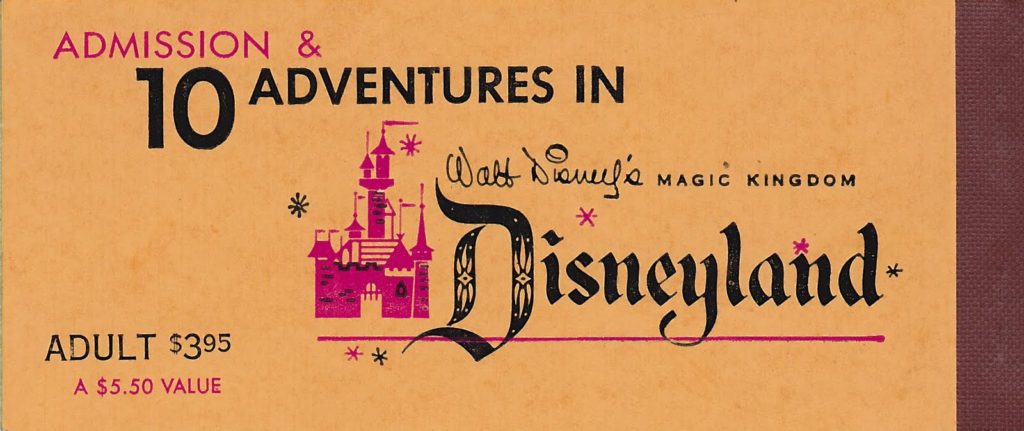
We know that Walt made a few key choices when it came to Disneyland, all in hopes of differentiating this new enterprise from other “amusement parks.” For example, Walt ensured that his location scouts stayed well away from a beach, as he didn’t want what he called the “barefoot crowd”; his park was not open for the public to amble through, but had one entrance with an entrance fee; no chewing gum, cotton candy, peanuts, or ice cream bars were sold, as they stickied and dirtied up amusement parks; Disneyland had a dress and appearance code excluding “yuppies” with long hair or visible tattoos…
And, most important for us to know today, Walt decreed that Disneyland would not serve alcohol. Don’t misunderstand. Walt unabashedly loved a Scotch Mist at the end of the long day. But even so, he declared from the start that at Disneyland, alcohol wouldn’t have a place. In the summer of 1956, Walt was interviewed by The Saturday Evening Post’s Pete Martin, who asked what exactly made Disneyland different. Walt replied in part:
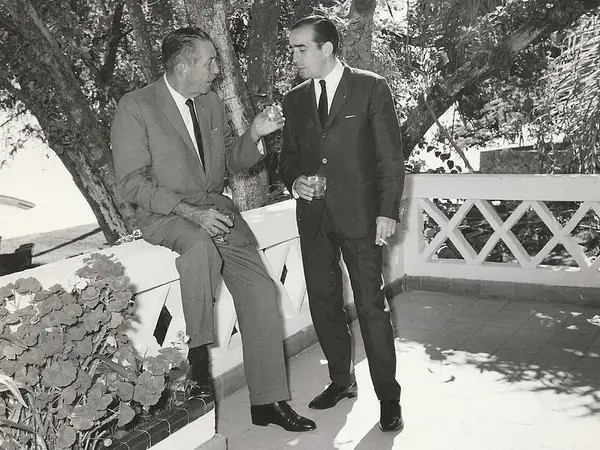
“No liquor, no beer, nothing. Because that brings in a rowdy element. That brings people that we don’t want and I feel they don’t need it. I feel when I go down to the park I don’t need a drink. […] After I come out of a heavy day at the studio sometimes I want a drink to relax. […] I work around that place all day and I don’t have one.”
Of course, there was an exception… As shared by Disneyland archivist Jason Schultz, Walt had an entirely different attitude about Holidayland, the rentable recreation and picnic facility accessed in Disneyland’s first decade by its own parking lot entrance. Catered by the park’s Red Wagon Inn, event rentals and picnic lunches hosted in Holidayland came with bottomless beer.
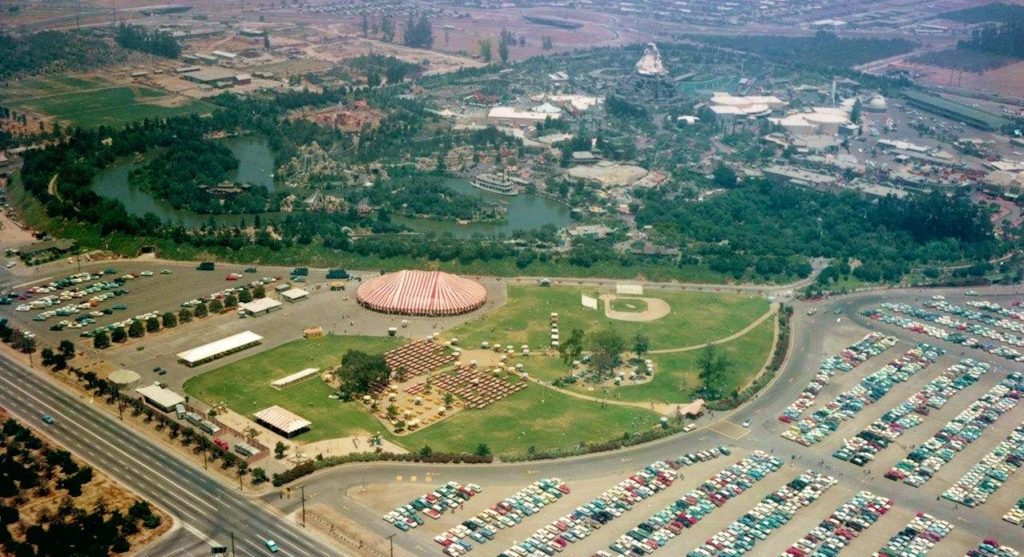
In the essential Disneyland: The Nickel Tour, Holidayland’s manager, Milt Albright, recalled, “The beer at Holidayland didn’t bother Walt, even though you didn’t dare mention alcohol in connection with Disneyland.” Likewise, the park’s first operations supervisor, Jack Taylor, remembered, “Walt though beer was a basic part of a picnic. It was there if you wanted it.”
So as early as 1957, alcohol was indeed being served on Disneyland’s property… even if Walt didn’t quite consider it Disneyland proper. In any case, it’s clear that Walt’s firm stance against serving alcohol within the berm was one of the simplest ways Disneyland differentiated itself from its amusement park cousins. However, the park’s “dry” doctrine didn’t last as long as fans tend to think that it did…
First drops (1967)

At a cost of $15 million, New Orleans Square debuted at Disneyland in July 1966 – eleven years after the park’s opening (and coincidentally, on some of the space that had previously been Holidayland). With the then-mayor of New Orleans in attendance, Walt Disney joked during its dedication that his new “land” (the first added to Disneyland) cost more than the original Louisiana Purchase… and was cleaner, too.
It’s often said that New Orleans Square was Walt’s pride and joy, and many fans call it the most beautiful land in any Disney Park. It easy to see why. Within, guests can explore the intricate, crisscrossed streets of the city, pop into bauble shops, enjoy live jazz bands as steamships sail past, or relax on wrought-iron, ivy-covered patios with steaming powdered-sugar beignets and mint juleps (of the non-alcoholic variety, of course).
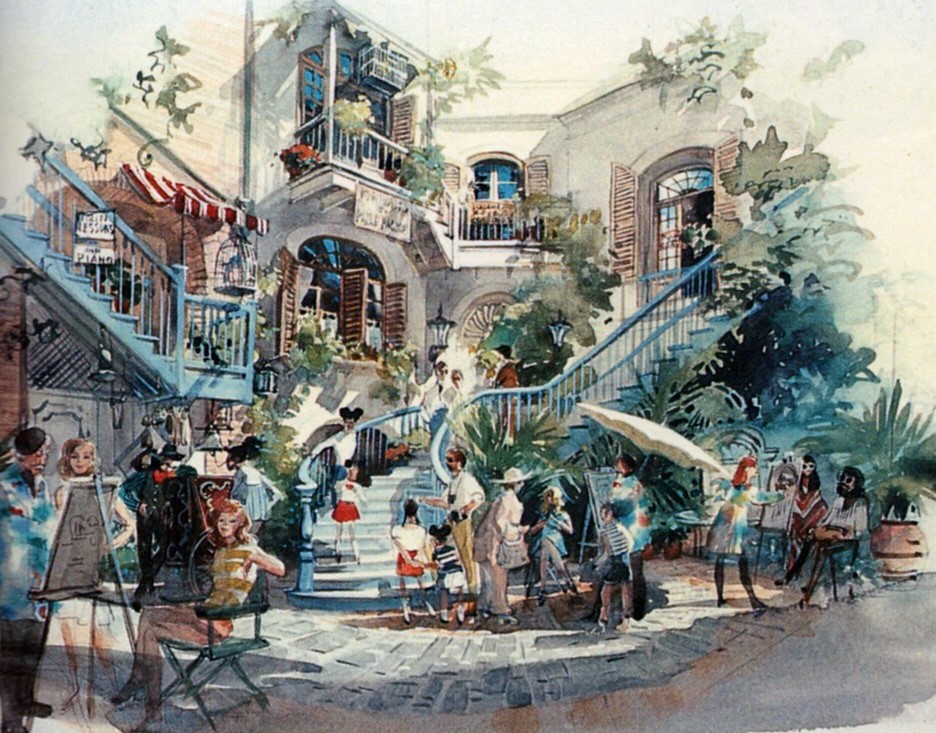
Walt’s speech at the land’s opening also happened to be his last public appearance at the park before his unexpected death of lung cancer that December. Spring of 1967 is when the park finally opened Pirates of the Caribbean (Walt’s magnum opus, by most accounts), and by the summer after Walt passed away, alcohol was available at Disneyland.
The idea of Walt’s one verboten beverage flowing freely within months of his death might not be a great look in retrospect, but suffice it to say that Walt himself had approved of the exception. After all, beginning in the summer of 1967, there was just one place in Disneyland Park to find an alcoholic drink: the private corporate club occupying the second floor of New Orleans Square, Club 33.
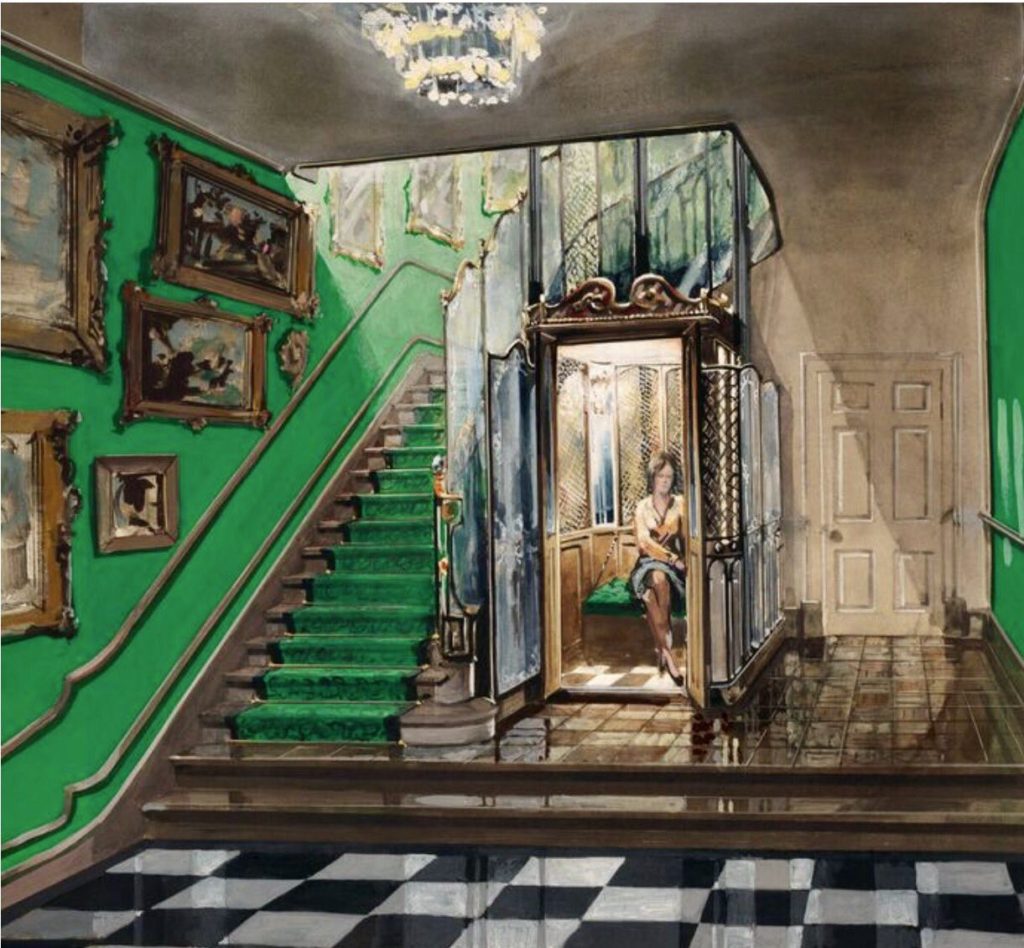
In fact, Disneyland has long had a liquor license to cover Club 33 and special events at the park. That’s why, when discussing Disneyland’s “dry” tradition, it was carefully noted that Disneyland had never served alcohol… to the public. But for the well-to-do of Club 33, it’s never been taboo to relax on a second story patio overlooking New Orleans Square with a real mint julep in hand.
Ah, but now we arrive at the opening of Walt Disney World… With Walt gone, how would the new Florida property handle alcohol?
Dry Disney World (1971)
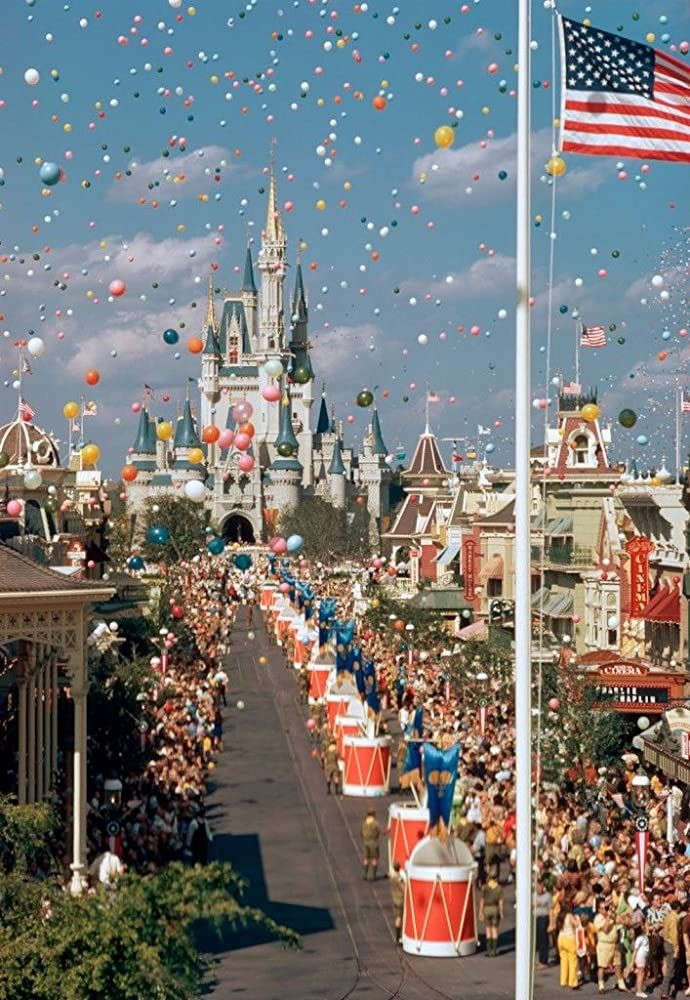
When Magic Kingdom opened in 1971 under the supervision of Walt’s brother Roy, most of its attractions (and policies) were pulled straight from Disneyland… including the park’s de facto ban on alcohol. While guests might’ve enjoyed an “adult beverage” across Walt Disney World property, within the boundary of Magic Kingdom’s Railroad, Coca-Cola would have to do.
(Of course, that didn’t stop it from looking like alcohol might be served at various “taverns” scattered across the park’s themed lands – a humorous and surprising tour undertaken by the incredible Werner Weiss at Yesterland.)
Interestingly, that gave Walt Disney World’s theme park the straightforward policy that no alcohol was served at Magic Kingdom, period – something that Disneyland itself couldn’t even claim thanks to the Club 33 exception. But just give it a decade…
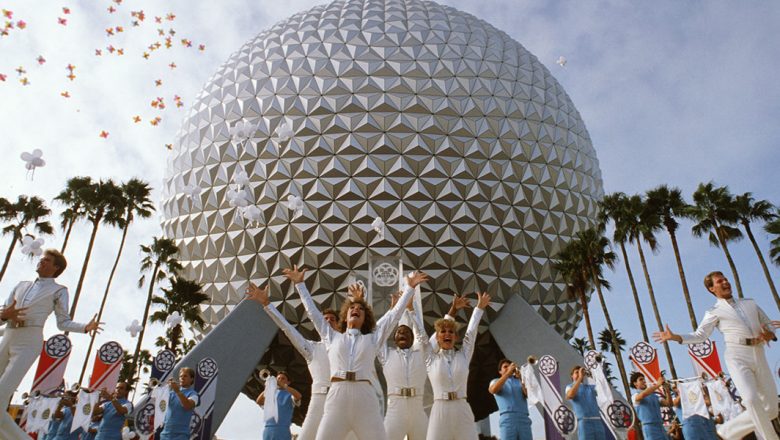
In 1982, EPCOT Center opened. With two World’s Fair style realms dedicated to futurism and globalism, respectively, executives had to face the elephant in the room: alcohol. A more “adult” park focused on industry and entertainment, EPCOT Center didn’t shy away from offering alcohol even from day one.
Quite the contrary, you might argue that alcohol is essential to the DNA of EPCOT. The pavilions of World Showcase were meant to be samplers of international culture and cuisine, after all, and for many countries represented in the World Showcase, alcohol is a defining part of their culture and cuisine. How authentic could an outpost of Germany be if it didn’t serve beer? And so, at EPCOT, it did.
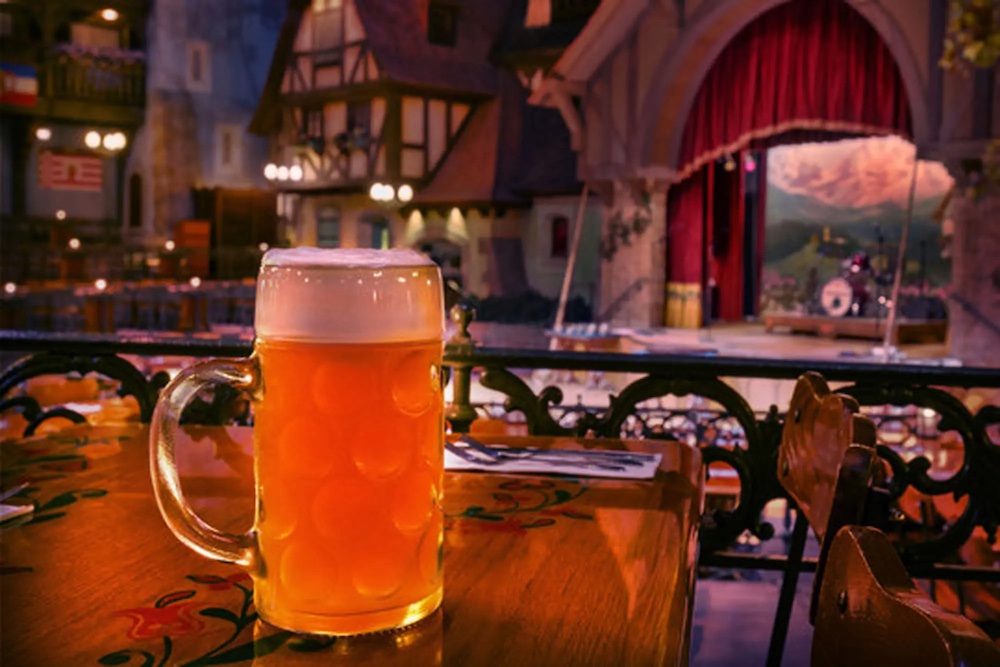
A little revisionist history is all it took. Now, when Walt said that his park would be dry, what he really meant is that any Disney park with a castle at its center would be dry… a charming differentiation, but admittedly a somewhat absurd and arbitrary reinterpretation that, for some reason, became accepted as canon. That’s why, when Tokyo Disneyland opened as the fourth of Disney’s theme parks in 1983, it, too, was “dry.”
Via EPCOT, a new unwritten rule had been born: while “Castle Parks” would not serve alcohol in Walt’s time-honored tradition, other Disney theme parks could serve alcohol galore. And not even behind the fortress walls of “fine dining” restaurants. Buy a beer at a cart, and carry it with you throughout the park if you want! Grab a margarita in Mexico; a beer in the United Kingdom; and of course, a glass of wine in France!
And that brings us to our next leap forward… The real France… Read on…


